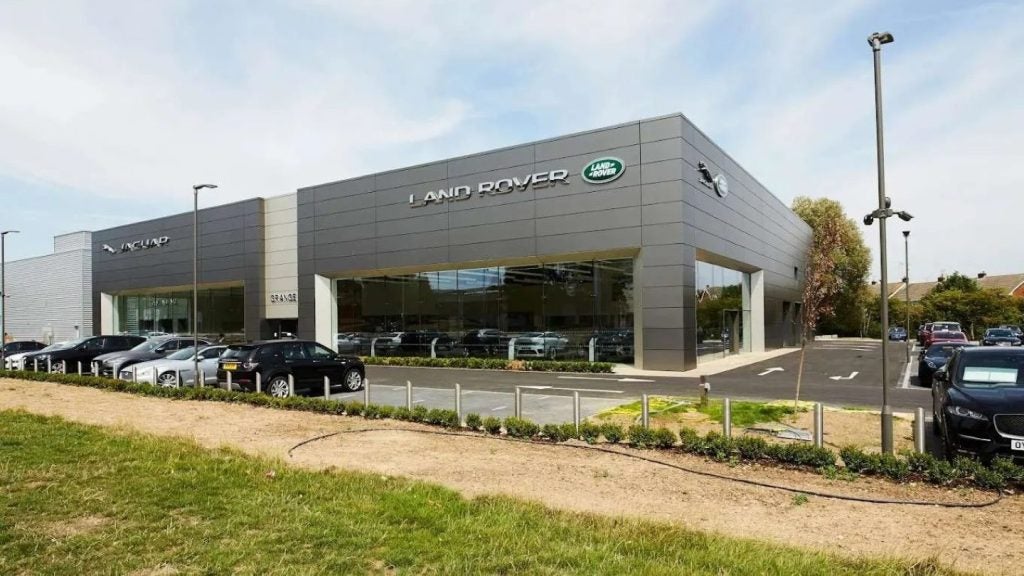Amidst soaring interest rates, the automotive finance industry is preparing for a digital revolution. Robert Johnson, Executive Vice President of Auto Finance at asset finance software provider Odessa, delves into the five pivotal trends that are moulding the sector. From embracing component-based technology to navigating the landscape of connected cars, Johnson sheds light on how these innovations are not only enhancing customer experiences but also streamlining operational efficiency.
With interest rates sky-high, the automotive finance industry is under as much pressure as ever to deliver a flexible experience that will help its customers close deals and keep car buyers happy.

US Tariffs are shifting - will you react or anticipate?
Don’t let policy changes catch you off guard. Stay proactive with real-time data and expert analysis.
By GlobalDataThe key is modernisation, and the industry desperately needs it. As few as 12% of car buyers are signing paperwork online, according to a 2022 Cox survey, underscoring that the auto industry has in many ways been left behind by digital transformation.

Modernisation can change that, but to take advantage of new technology, the industry needs to align on what the tenets of the next generation of auto finance infrastructure entail. Five staples to consider are component-based technology, digital self-serve capabilities, embedded finance, usage-based leasing, and connected cars. Here’s why all of these five trends matter and how auto finance companies can take advantage.
1) Component-based technology
The technical foundation of auto finance is evolving from monolithic systems and modules to components. Component-based technology allows auto finance companies to manage many different financial instruments and business units with different needs on one platform. This is in contrast to legacy systems that struggle to accommodate innovations and demand that auto finance companies conform to the old way of doing business.
Another strength of components is that they allow lenders to choose only the aspects of a technology platform they need. It’s a costly and time-intensive commitment, for example, to replace an entire servicing or origination system. With components, you can add and remove the parts you want, vet them, and come back for more when it makes sense.
Lastly, the shift to components is part of a broader move to the cloud, which enables real-time data collection in lieu of the batches of data that used to be the industry standard. This is critical for unlocking self-serve capabilities and supporting emerging technologies like connected cars as real-time, in-car micro-transactions increase.
2 Digital self-serve capabilities
The move to the cloud is empowering auto finance companies to step into the twenty-first century with a digital self-serve model for their customers. In the age of Amazon, where self-service truly means one click, customers don’t want to pick up the phone to ask a question or process a basic transaction. Companies on the cutting edge of auto finance are setting up portals so customers can manage their finance agreements at home themselves.
Digital self-serve capabilities also smooth out the auto finance supply chain. If auto finance companies want to originate loans without servicing them, they can use cloud-based technology to white-label partners, who can accommodate their customers without complicating the end-user experience.
3) Embedded finance
Embedded finance is the incorporation of financial services into traditionally non-financial companies. This is especially relevant to auto finance, an industry in which manufacturers are launching their own financing programmes.
It’s a technology built on the cloud that unlocks embedded finance. With a flexible component-based foundation, car companies can go beyond originating and managing leases, adding warranties, insurance, and maintenance plans. To make this work, auto finance platforms need to be sophisticated enough that their customers can maintain different schedules for different products and amortize them individually.
Flexible technology also makes it easier to manage financial models like subscriptions with flexible terms. This is, again, a question of giving the end user a choice over how they finance their car — as well as the ease of digitally managing that financing.
4) Usage-based leasing
We all know how auto leases have historically worked: you get a lease for a designated period and for a set amount of mileage. This model is simplistic and easy to manage.
But with real-time data made available by the cloud, auto finance companies and their customers can offer a more tailored approach: usage-based leasing. Under this model, customers only pay for usage based on an agreed-upon metric. This could mean the customer only pays for the number of miles they drive. Or it could mean the customer only pays for certain features as they’re needed, as exemplified by heated seat subscriptions.
The companies that can offer these new ways of paying for vehicles and services will be able to differentiate themselves from competitors who offer fewer choices. Asset finance software will power this more flexible and granular approach to equipment finance, allowing finance companies to bill for parts individually on a single contract.
5) Connected cars
Connected cars, or cars that are part of the Internet of Things (IoT), connecting with the driver’s smartphone and applications, are one of the more futuristic use cases of auto finance innovation.
With the ability to process real-time data, a manufacturer like Toyota can allow its drivers to order Chipotle via a leased car, keeping an ongoing record of any transactions and billing appropriately for them. The car can even integrate with Apple Pay so that the customer, the business, and the auto finance company all get a swift and easily reconcilable experience.
The flexible future of auto finance
In a word, the modern future of auto finance is flexible. Customers want to do business how they want, not how banks or dealerships tell them to. The ability to cater to customer preferences will be the terrain on which the future of the auto business is won. And cloud-based component technology will be at the foundation of those victories, quietly making it possible from the background.









